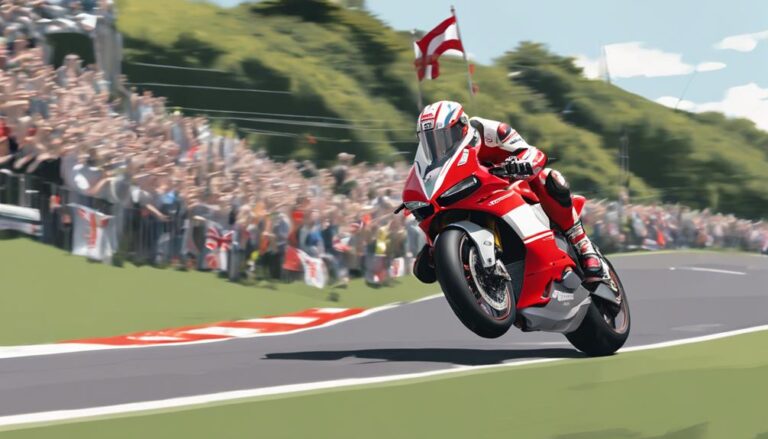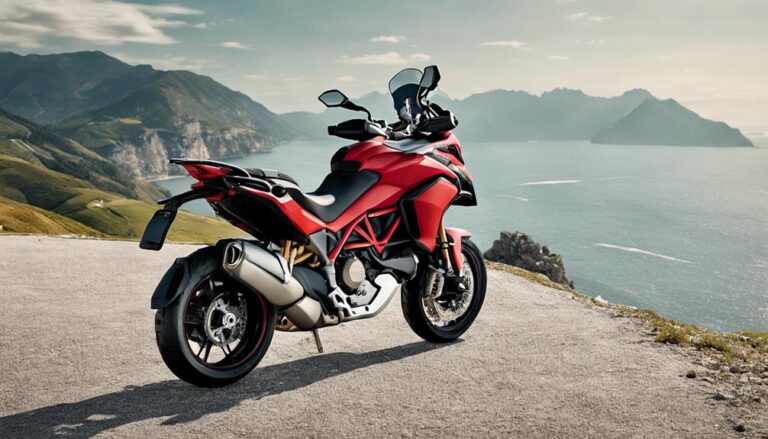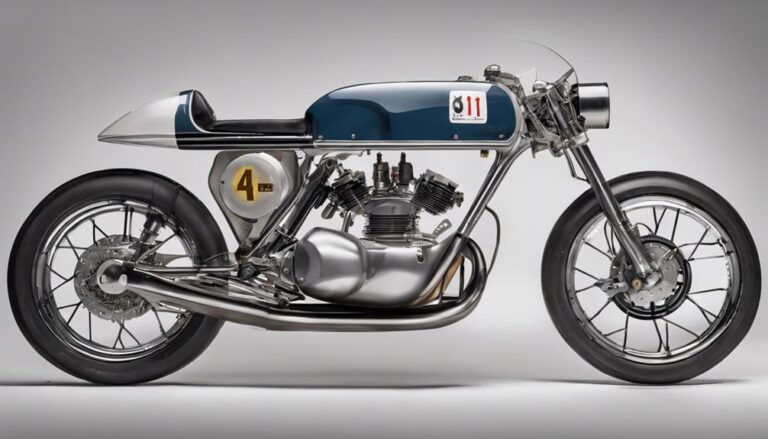Unlocking your scrambler’s potential for maximum miles per gallon is akin to finding hidden treasure; it requires a map and a sense of adventure. You’ve probably wondered how to stretch your fuel further, especially with rising gas prices.
This guide walks you through understanding your bike’s engine, the importance of regular maintenance, and optimizing tire pressure—all aimed at enhancing fuel efficiency.
It doesn’t stop there; we also explore how load, weight, and riding techniques can significantly impact your MPG.
Contents
Understanding Your Scrambler’s Engine

Scrambler engines, varying from 400cc to 1200cc, strike a balance between power and fuel economy. The choice between air-cooled and liquid-cooled engines significantly affects performance; liquid-cooled variants typically offer better efficiency under high demand.
The engine configuration, whether a parallel twin or V-twin, directly impacts fuel consumption. Parallel twins are generally more efficient due to their balanced design, reducing vibration and improving combustion efficiency.
Knowing the RPM range where your Scrambler performs best is essential; operating within this range ensures optimal fuel economy, leveraging the engine’s designed efficiency.
Regular Maintenance Check-Ups

Regularly checking and optimizing tire pressure not only enhances fuel efficiency but also improves handling and safety.
Adhering to a filter replacement schedule, for both air and fuel systems, guarantees optimal engine performance and contributes to a more efficient fuel consumption rate.
Essential Fluid Level Checks
| Fluid Type | Purpose | Impact on MPG |
|---|---|---|
| Oil | Ensures proper lubrication and engine performance | Reduces friction, improving efficiency |
| Coolant | Prevents overheating, maintains engine temperature | Optimizes engine performance, affects MPG |
| Brake Fluid | Enables safe, effective braking | Indirectly affects fuel efficiency by maintaining optimal braking |
Regularly inspecting these levels ensures your Scrambler runs smoothly, preventing issues that could lead to increased fuel consumption or costly repairs. It’s a straightforward yet critical component of vehicle maintenance that directly influences your Scrambler’s performance and efficiency.
Tire Pressure Optimization
Consider these facts to understand the impact of tire pressure on your vehicle’s performance:
- Maximize Fuel Efficiency: Maintaining optimal tire pressure can improve fuel efficiency by up to 3%, translating to significant fuel savings over time.
- Reduce Rolling Resistance: Incorrect tire pressure increases rolling resistance, which can decrease MPG. Ensuring tires are properly inflated minimizes this resistance.
- Prolong Tire Lifespan: Regular checks prevent underinflation, which can lead to uneven wear and a reduction in fuel economy by 0.2% for every 1 psi drop in pressure.
Adhering to these guidelines ensures your Scrambler runs efficiently, saving you money and extending the life of your tires.
Filter Replacement Schedule
Regular maintenance check-ups, including the timely replacement of your Scrambler’s air filter every 12,000 to 15,000 miles, are important for sustaining peak fuel efficiency and engine performance.
Adhering to the manufacturer’s recommendation not only optimizes performance but also prevents a decrease in fuel efficiency by up to 10%.
The importance of this task escalates in dusty environments or during frequent off-road riding, where air filter blockages occur more rapidly, necessitating more frequent changes. Ignoring this essential maintenance can result in decreased engine power, increased emissions, and heightened fuel consumption.
Understanding that a clean air filter is paramount to maximizing your Scrambler’s MPG and ensuring smooth engine operation is vital. Hence, diligent air filter maintenance becomes a cornerstone of your vehicle’s care routine.
Optimizing Tire Pressure
Maintaining proper tire pressure can significantly enhance your Scrambler’s fuel efficiency by up to 3%. Underinflated tires create more rolling resistance, which means your engine has to work harder and consume more fuel.
Conversely, overinflated tires may compromise traction, leading to uneven wear and, paradoxically, reduced efficiency. Here’s how you can optimize tire pressure for maximum MPG:
- Check tire pressure monthly: Regular checks ensure you’re always riding with optimal pressure. Use a reliable gauge for accuracy.
- Adjust according to the manufacturer’s recommended levels: Find these specifications in your Scrambler’s manual or on a sticker inside the fuel tank lid.
- Inspect before long trips: Changes in load can affect pressure. A quick check ensures you’re starting your journey with the tires at their best.
Adhering to these practices not only boosts MPG but also extends the life of your tires.
The Impact of Load and Weight

Shedding light on the critical aspect of load and weight, it’s essential to understand that adding even a modest amount of extra weight to your Scrambler can significantly impact its fuel efficiency, reducing it by up to 2% for every 100 pounds carried.
This loss in efficiency is more pronounced at higher speeds, where the additional weight increases resistance, demanding more fuel to maintain speed. Overloading not only compromises fuel economy but also affects your Scrambler’s handling and stability, posing a safety risk.
To save fuel and ensure optimal performance, focus on properly distributing weight across your bike. Monitoring the total load is vital for maximizing MPG, especially when navigating various terrains.
Adopting Efficient Riding Techniques
By adopting efficient riding techniques, you can significantly enhance your Scrambler’s MPG, starting with maintaining a steady speed of 55mph to optimize fuel consumption.
To further boost your fuel efficiency, consider these technical strategies:
- Maintain Optimal Tire Pressure: Regularly check and adjust your Scrambler’s tire pressure to the manufacturer’s recommended levels. Correct tire pressure reduces rolling resistance, directly impacting fuel economy.
- Smooth Acceleration and Deceleration: Gradual throttle adjustments contribute to better MPG. Abrupt speed changes require more fuel; hence, practice smooth transitions.
- Lighten Your Load: Excess weight demands more power and, consequently, more fuel. Travel light whenever possible to maintain optimal fuel efficiency.
Implementing these riding techniques won’t only improve your fuel efficiency but also enhance the overall performance of your Scrambler.
Navigating Fuel Additives and Octane Levels

Understanding the role of fuel additives and octane levels is crucial for optimizing your Scrambler’s fuel efficiency and engine performance. Fuel additives enhance combustion, clean engine parts, and minimize friction, leading to improved MPG.
High octane fuels, recommended for your Scrambler, ensure better combustion and efficiency. However, it’s vital to select reputable additives that genuinely boost octane levels for reliable results.
| Aspect | Benefit | Consideration |
|---|---|---|
| Fuel Additives | Enhances combustion, cleans engine parts | Choose reputable brands |
| Octane Levels | Improves efficiency and performance | Use Scrambler’s recommended level |
| Additive Use | Can boost octane levels | Verify claims and effectiveness |
Regular monitoring of fuel quality and wise selection of additives are key to maintaining your Scrambler’s MPG.
Conclusion
In sum, maximizing your Scrambler’s MPG hinges on comprehending its engine, sticking to regular maintenance, and optimizing tire pressure. Lightening your load and adopting efficient riding techniques also play crucial roles.
Furthermore, navigating the nuances of fuel additives and octane levels can significantly influence fuel efficiency. By implementing these strategies, you’ll not only boost your bike’s performance but also extend its range, ensuring a more economical and enjoyable ride.






